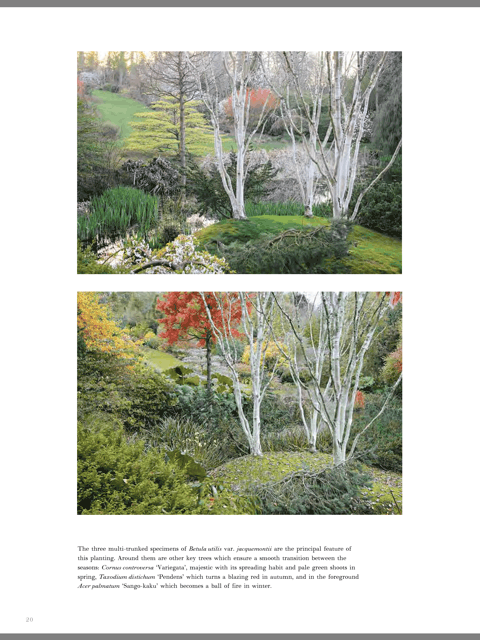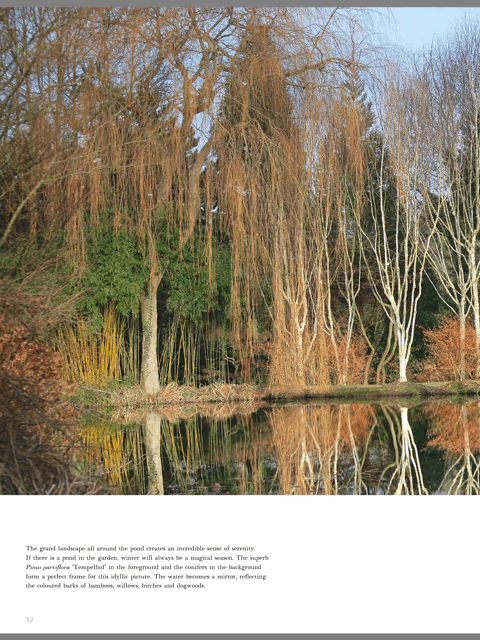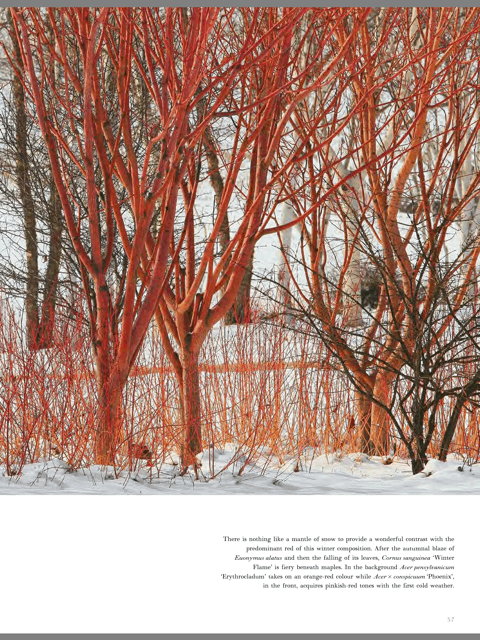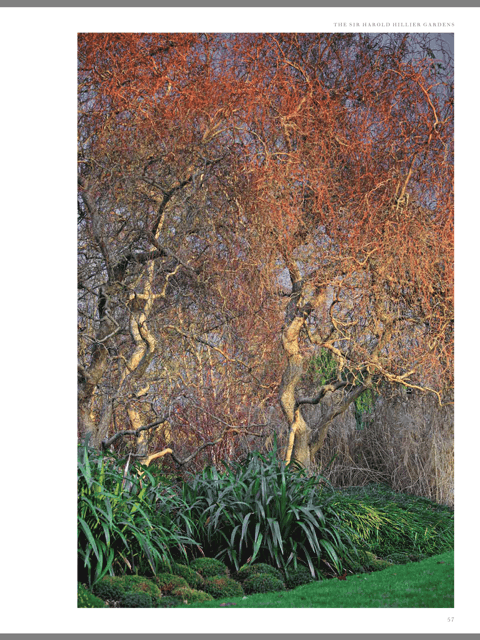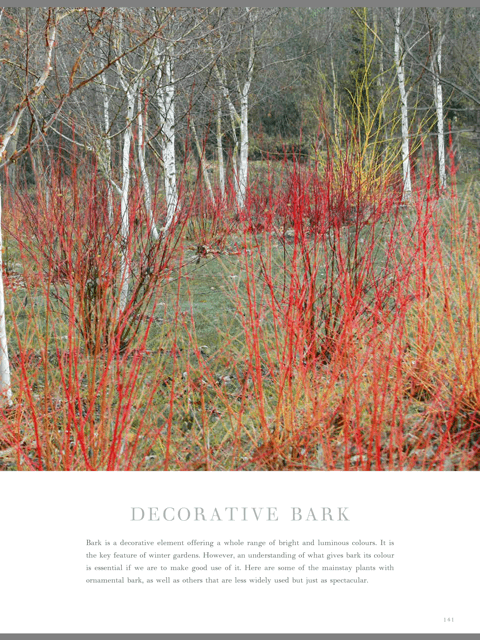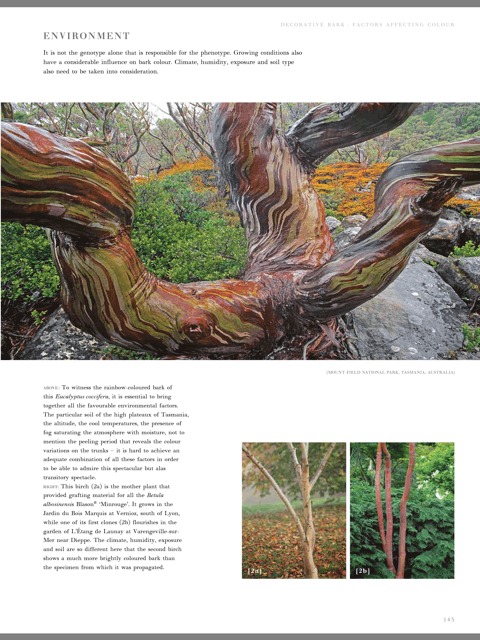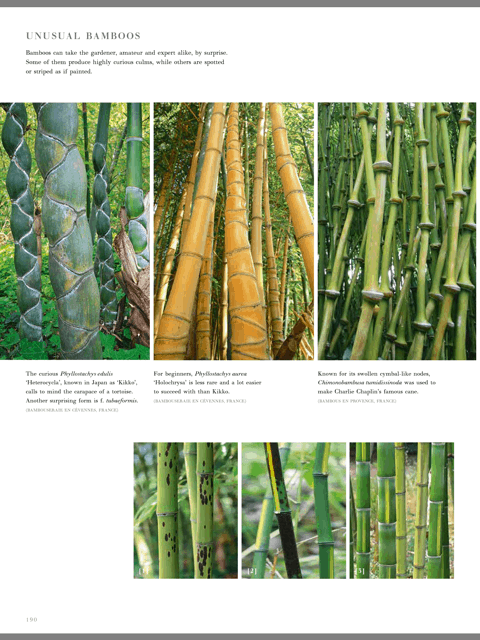Upon beginning Winter Gardens I was unclear exactly what defines a Winter garden. Having finished the book, I’ve changed my thinking about my own garden’s structure and planting and, additionally, have a new appreciation for bark…yes that’s right bark! Much of the book is dedicated to understanding what affects the look of a tree or plant when it’s bare and, consequently, bark is focal point and it’s fascinating. I’m not biologically-orientated person but I am an artist and it felt like Cedric Pollet was explaining a new medium and sharing how each kind of bark one chooses shapes the artwork created, a garden that shines in the Winter.
The gardens in the book exquisite! I have rarely seen such innovation and beauty come together so well. It is also packed with historical information such as “The three principal genera with decorative bark – Betula (birch), Acer (maple), Prunus (Cherry – were introduced late into Europe. Some species, mainly American (the Pennsylvania maple, the black birch and the paper birch), had arrived by 1750. Yet it was not until the end of the 19th and beginning of the 20th centuries that the available range of species with ornamental bark was enriched mostly with plants that came from China.”
Cedric gives this perspective on the book’s target market “It is above all an act of homage that I wish to pay to all those visionary gardeners who have inspired me so much over the past few years. The book is also addressed to everyone who loves plants or is passionate about gardens, as well as to landscape professionals.” He fulfills his promise beautifully! I walked away truly inspired and intending to refer back to this book for more. Highly recommended for those interested in gardening and landscape beauty, 4 out of 5!
From the back cover:
Cedric Pollet is the author / photographer of the acclaimed book Bark: An Intimate Look at the World’s Trees (over 50,000 sales worldwide). In his next book, he visits 20 of the most beautiful winter gardens in France and the UK, showing with stunning photography the ways in which they delight in this often neglected season, using structural planting, subtle textures, and pops of colour from branches and berries. The second half of the book is an illustrated directory of over 300 plants which encourage readers to achieve these effects in their own gardens. There is nothing else available like this large format inspirational reference book, by one of today’s masters of garden photography.

